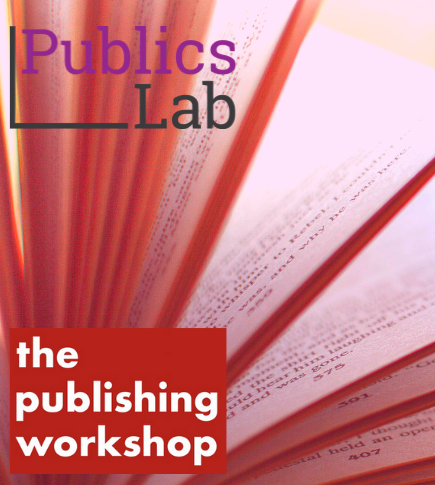
Over the past few decades, criminal justice reform has evolved from a fringe movement to one of the most prominent social justice issues of our time. More and more, research, policy, and reform have begun to catch up with grassroots activism that acknowledge the systemic drivers that facilitate and compound justice involvement. Many who are new to the movement may be surprised to discover that movements to reform the system are as old as the system itself.
Prisons were conceived as humane alternatives to corporal punishment—instead of public displays of violence against a perpetrator, prisons segregated people from society as both punishment for the immediate transgression and deterrence against future crimes. Ever since, generations of reformers have focused on improving the conditions under which people are incarcerated.Recent efforts include initiatives to end solitary confinement and create access to post-secondary education. Other cohorts of activists have focused on how the justice system processes cases and distributes punishment, resulting in alternative case processing strategies, such as specialty court rooms for specific populations, like veterans, or cases where resolution is supported by access to services, like in Mental Health Court. These efforts have been linked to lower rates of trauma and recidivism (that is, the likelihood someone will come back into the system once released), and contributed considerably to the field’s current cultural shift. More recently, the critical focus has shifted from merely focusing on reforming individuals or sections of the system to radically changing a system of injustice. For instance, reforming the system does little to address why people come into contact with it in the first place.
My interest in coming back to academia was inspired by my time working in justice reform—particularly from my time as a case manager at Friends Outside, a non-profit dedicated to serving incarcerated people, formerly incarcerated people, and their families. Through my work, I realized that so many of the reasons that people come into contact with the justice system are related to crimes of survival and the criminalization of poverty. In these instances, it is not enough to treat individuals better once they are in the system, especially because involvement in the criminal justice system has been found to compound such issues.
These concerns are at the heart of conversations about the current pretrial reform movement, particularly the push to end cash bail—the practice of requiring individuals who have been charged with a crime to pay a deposit to the court to guarantee they will return for all their necessary appointments and proceedings, in addition to avoiding new justice involvement. Cash bail disproportionately impacts low-income and poor individuals, driving already marginalized people and families further into the justice system. For instance, because of gender and race wage gaps, assigning men and women the same $1,000 bond would disproportionately disadvantage women who, on average, make 82% of what men make and are more likely to be responsible for taking care of young children. In some cases, communities have turned to pretrial risk assessment instruments (PRAIs)—actuarial tools that use statistical models to predict (1) the likelihood someone will appear at all their court dates if released and (2) if their release would propose a danger to the community.
While it is arguable PRAIs are more fair than cash bail or judicial discretion alone in some jurisdictions, activists and experts alike have cautioned communities against accepting in what many cases is a band-aid for deeper issues related to structural inequality. While spending the summer immersing myself in the research, literature, and activism around the issues related to pretrial injustice, I attempted to answer the question: If structural inequality is, at the very least, in part responsible for driving justice involvement trends, then what are communities’ responsibilities for addressing and reducing the risk of individuals’ justice involvement?
At the end of the day, communities bear significant responsibility for preventing justice involvement related to the criminalization of poverty. What if we examined the ways we create risk—risk of justice involvement, risk of failure, risk of cycling through the criminal legal system’s revolving door? What if we looked at addressing structural inequality and the availability of community resources as the means to deliver justice?
Thanks to the initial support from the Early Research Initiative and the PublicsLab at The Graduate Center, CUNY and additional funding from Humanities New York, I am developing a project called A New Risk Principle. The idea behind it is to explore the relationship between measures of social inequality and incarceration, directed by the voices of people intimately impacted by the criminal legal system. Over the next year, I plan to develop a statistical model to assess community risk, produce data visualizations based on those findings, curate a collection of research and literature that reflect shared values, and work with activists involved with community bail funds to develop a set of principles to guide policy implementation and help grassroots activists hold their local government accountable. I will make these resources and findings publicly available at no cost so those with the most need have support without having to pay tens-of-thousands of dollars for consultants.
The project’s goals, I believe, reflect the values of the PublicsLab: to transform scholarship to serve a greater public good. By identifying the ways structural inequality is potentially contributing to the criminalization of poverty at the local level, communities will be better positioned to advocate for investments in social welfare from their elected officials. By making the findings and resources available to the public and involving activists and directly impacted people, the project models a reciprocal relationship of knowledge production and dissolves the divide between academe and the community. Ultimately, the aim is not to reform the criminal justice system, but to transform communities’ understanding of their roles and responsibility in reimagining justice.
 Kristi Riley is a second year PhD student in the sociology program at the CUNY Graduate Center. Since entering the GC, she has been a fellow at the Center for Court Innovation and the PublicsLab, and is currently a Public Humanities Fellow with Humanities New York, where she is developing a project called A New Risk Principle aimed at recentering conversations about risk in criminalization and justice involvement to focus on community-based inequality. Her studies focus on critical criminology, feminist theory, and popular culture, and she hopes to explore participatory action research. She holds B.A.s in psychology and community studies from the University of California, Santa Cruz, and a Master’s of Science in conflict resolution from the University of Oregon Law School. Prior to becoming a Fellow, Kristi spent a decade working in justice reform, primarily on issues related to reducing the use of jail incarceration at the local level.
Kristi Riley is a second year PhD student in the sociology program at the CUNY Graduate Center. Since entering the GC, she has been a fellow at the Center for Court Innovation and the PublicsLab, and is currently a Public Humanities Fellow with Humanities New York, where she is developing a project called A New Risk Principle aimed at recentering conversations about risk in criminalization and justice involvement to focus on community-based inequality. Her studies focus on critical criminology, feminist theory, and popular culture, and she hopes to explore participatory action research. She holds B.A.s in psychology and community studies from the University of California, Santa Cruz, and a Master’s of Science in conflict resolution from the University of Oregon Law School. Prior to becoming a Fellow, Kristi spent a decade working in justice reform, primarily on issues related to reducing the use of jail incarceration at the local level.







